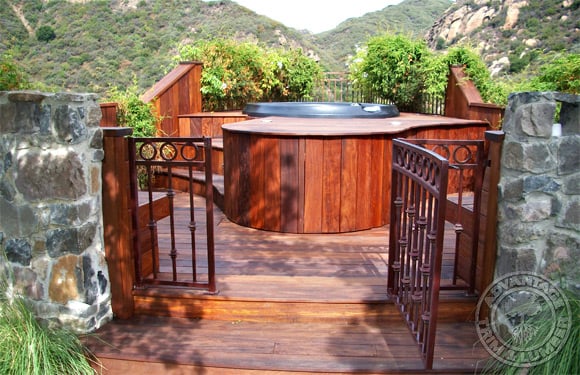
It’s almost Summer and thousands of homeowners across the country are getting ready to start working on their deck. Some will be remodeling and many will be building a deck for the first time. But, before hammer goes to nail, the question you must answer is, “What kind of material is best for decking?”
Should you go with real wood decking, or composite “wood” decking? Regular readers of this blog already know the limitations and problems that plague composite deck materials. Let’s face it; if plastic decking were so good, wood decking would be obsolete. But, because of the documented issues that both composite and PVC decking face, many people are opting for real wood deck materials.
So, let’s say that you chose to buy wood decking. What material should you choose, and what pitfalls are to be avoided when buying decking?
Here are 5 Ways to Save Money When You Buy Decking:
- Don’t settle for chemically treated and cheap decking materials. This is the “You get what you pay for” rule of shopping for anything. If you are on a tight budget, it pays not to settle for pressure treated decking. Yes, it’s cheaper than hardwood, but when you read about the chemicals used to treat the pine wood, and see how pressure treated wood decking looks in such a short amount of time, does it really benefit you to sacrifice your long term enjoyment? If you are on a tight budget, there are still some wonderful hardwoods out there that might cost a bit more, but will give you years of worry-free use. For instance Tigerwood and Garapa are very affordable. They are also great looking and naturally durable, without all the problems that treated decking has.
- Price is not as important as you think. Of course, you want to get the most for your money. We all do. But, when it comes to buying lumber, it’s easy to order something and not know what you’re really getting until the truck arrives at your job site. If you’re shopping online, check to see if the supplier is FSC certified, been around for at least a decade and, at the very least, willing to share some testimonials or pictures of jobs that have been completed with their products. I know what you’re saying, “Ok, that’s all well and good…that still doesn’t clear up how to buy wood decking!” Let me address that by saying…
- Lumber grade is more important than price. This may seem counter-intuitive, but it’s true. Some suppliers don’t want you to know the difference so they put up pretty pictures that they’ve doctored to cover up the flaws in their material. They also put up a very low price. This combination has led to many frustrated homeowners trying to get their money back in vain. So, with this in mind? It pays in the short and long run to ask up front about the grade of lumber BEFORE you buy. Here is a description of lumber grades to help you:
- Common/Select Grade – Common grade can be poorly milled and come with unappealing color variances. It often contains sapwood, visible knots & worm holes.
- Premium/Clear – This is the best grade and is all heartwood. There should be no knots, or worm holes. Premium grade wood is carefully milled material that truly reflects the colors and natural accents of the wood.
- Convert square footage to lineal feet. Ah, math. The bane of many children and of people who are building a 500 square foot deck and order 500 lineal feet. Sure. you’ll get your wood, but you’ll have just enough to build half of your deck! An error like this means paying TWICE for shipping. You can avoid this pitfall and keep more of your money by using our Square Foot to Lineal Foot Calculator.
- Buy Random Lengths. When it comes to buying hardwood decking, you save more money when you specify a range of lengths. Many suppliers will charge you more if you demand one specific length. Why? It’s a simple matter of cost, inventory, and waste. With a majority of product originating in domestic and South American mills, suppliers buy a range of lengths of 8’ through 20’. Selling within this range is the norm. There’s also the matter of waste. If a supplier has a greater inventory of 15′ decking and you order 13′ boards, there’s the cost to mill and dispose of all that waste. Besides, most deck builders will almost always use a range of lengths depending on both your home’s and the deck’s design.
These tips will save you hundreds of dollars and increase the chances that you will enjoy your new wood deck for a very long time.
Questions? Leave a comment. We’d love to hear from you.
Great Website! Great Information!